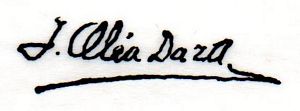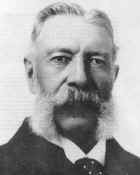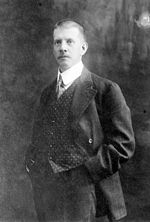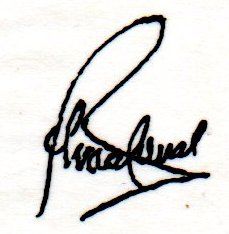El Banco de Guerrero
A federal concession for a bank in Guerrero was granted on 30 September 1903, but the promoters had difficulty in raising the necesary finance and had to ask for extensions to the time-limit and a reduction in the capital required. The first bank did not actually open until three years later.
On 31 March 1906 a meeting of shareholders was called to choose a Consejo de Administración in Iguala, a Consejo Consultivo based in Mexico City, and two comisarios. The board was composed of Antonio Lavín, Guillermo Mastache and Cándido Nava; the consejo consultivo of Ricardo Honey, Emilio Velasco, Porifirio Díaz (hijo), Joaquín Eguía and Tomás P. Honey, and the comisarios were A. Lozano R. and Enrique Carral. Rogerio L. Hersberger was appointed director and Eduardo W. Dawe, cajero contadorThe Mexican Herald, vol. XXII, no. 46, 15 April 1906.
The bank opened in Iguala, the only town in Guerrero with a rail link to Mexico City, on 2 July 1906 with its offices in a building that had served as the Hotel Universal and had been extensively remodelled“On Monday last the Bank of the State of Guerrero was inaugurated and its doors thrown open to the public. In view of the difficult means of communication between Chilpancingo, the capital of the state, and all important financial centers, the bank was establishes at Iguala, by special authorization from the Government, as that town is connected by rail to the City of Mexico, and therefore better adapted for financial business than Chilpancingo.
Last Sunday Mr. Richard Honey, who is president of the Guerrero bank, left for Iguala on a special car, accompanied by Major Porfirio Diaz, Mr. Luis de la Canal, general inspector of banks, Mr. J. V. Burgos, sub-manager of the International and Mortgage bank of Mexico, Mr. B. Honey, Jr., Mr. W. J. Honey, Mr. H. E. Brooke and several other prominent persons.
At Cuernavaca the governor of the state of Morelos, Mr. Manuel Alacaón, and the manager of the Morelos bank, Mr. J. Carreon, joined the party. Lunch was served on the car soon after leaving Cuernavaca.
A most hearty reception was accorded the visitors on arrival at their destination, many of the prominent people of Iguala being at the depot to receive the party from Mexico. After visiting the bank’s premises and driving around Iguala, the visitors returned to their car to sleep. On Monday morning the bank’s doors were thrown open, amid great enthusiasm, and immediately following the inauguration, all the invited guests were regaled with a sumptuous banquet, during which many appropriate speeches were pronounced.
In the evening a grand ball and supper were offered to the visitors by the leading families of Igual, the enjoyable affair being kept up till the early hours.
The Bank of Guerrero occupies the building formerly known as the Hotel Universal, which was purchased some months ago by the founders of the bank and thoroughly remodelled to meet its present requirements, It is probably the finest building in the state.
…
The special car bearing the party from Mexico left Igual on Tuesday morning, a most enjoyable time having been spent by all who attended the inauguration of the institution.
Owing to stress of business the governor of the state of Guerrero, Mr. Manuel Guillen, could not attend the opening ceremony, but he telegraphed congratulations and best wished from his capital.
A telegram was also received from the president of the republic, wishing the bank all success and prosperity.” (The Mexican Herald, 7 July 1906) .
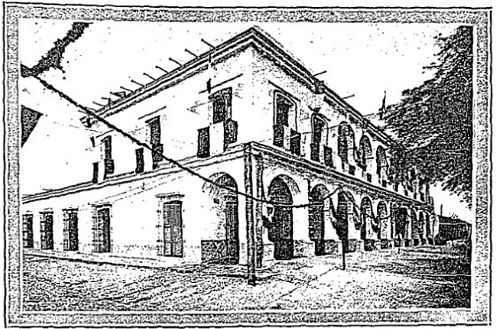
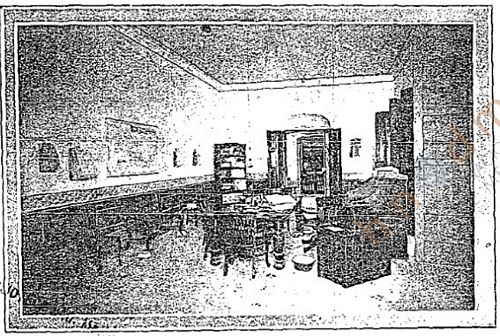
Manager's office
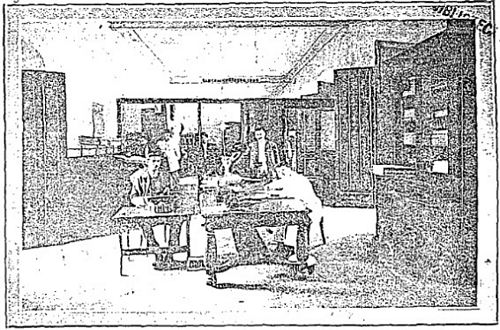
Cashier's office
Branch offices were opened in Acapulco and Bravos (Chilpancingo).
On 27 July 1910 President Díaz told Damián Flores,the governor of Guerrero that the bank’s manager, Eduardo L. Antúnes, had given good reason to be arrested but as he was friendly with the judge, Flores should intervened to ensure justice was doneAPorfirioDíaz, Telegramas 1910, folio 2652, telegram Díaz, Mexico, to Damián Flores, governor of Guerrero, Chilpancingo, 27 July 1910. The next day Flores reported that Lantunes (sic), together with Manuel and Carlos Valle. had been arrestedAPorfirioDíaz, Telegramas 1910, folios 2681 / 2716. Ignacio Oléa Daza took over as interim manager.
Following an investigation by the Comisión Reguladora e Inspectora de Instituciones de Crédito the bank's charter was cancelled on 15 December 1915.
Under Obregón decree of 31 January 1921 the bank was placed into Class B (for banks whose assets and liabilities were about equal and which were given a short time in which to obtain the necessary funds to resume) and allowed to resume all customary operations except the issue of bank notesDiario Oficial, 29 June 1921 letter Manuel Padrés, subsecretario, to Ignacio Olea Daza, manager, 16 June 1921. The bank was finally liquidated in 1921.
American Bank Note Company print runs
The American Bank Note Company produced the following notes. They engraved special vignettes of Vicente Guerrero Saldaña (C 280)Vicente Guerrero was born in Tixtla, Guerrero on 10 August 1783. He began his military career under Galeana in 1810 and became famous for his heroic battles in the South. He defeated the Royalists José de la Peña, Lamadrid, Armiso and Samaniego. When Morelos was executed, Guerrero was one of the few insurgents who refused amnesty, though he was threatened with the death of his father, to which he replied: “The fatherland is first”.
On 10 January 1821, Iturbide was sent to fight against Guerrero. He sent a letter to Guerrero inviting him to a meeting that resulted in an alliance which consummated the Independence of Mexico. When Iturbide proclaimed himself emperor, Guerrero fought against him until the end of the empire. He was Minister of the Executive Supreme Power during the presidency of Guadalupe Victoria.
In 1828, he was nominated for the presidency. He became President on 1 April 1828 and lost power on December 16 of the same year when deprived of his post by Congress and Anastasio Bustamante. Guerrero fought against Bustamante’s government until January 1831 when he was taken prisoner aboard the brigantine Colombo. He was given a court martial and was executed in Villa of Cuilapan on 14 February 1831. for the faces, of the church at Taxco (C 942)The Parroquia de Santa Prisca y San Sebastían, commonly known as the Church of Santa Prisca, was built in Taxco between 1751 and 1759 by José de la Borda (ca. 1700–1778), who had made a great fortune in the silver mines surrounding the town. Despite his wealth, however, the opulence of the church nearly bankrupted him. The construction of the church lasted 15 years and was aimed at creating a space where the priest Manuel de la Borda, son of José de la Borda, could officiate mass.
Although he had arrived in Taxco only about thirty-five years before the construction of the Santa Prisca church, José de la Borda was already one of the most important figures in the town, which is why the Archbishopric of Mexico allowed him to erect the parish your entire taste.
Cayetano José de Siguenza drew up the plans in the form of a very narrow Latin cross due to the conditions of the land and the architect Diego Durán Berruecos built it between 1751 and 1759.
It has two twin towers in the Churrigueresque style and a chapel decorated with Talavera azulejos, characteristic of New Spanish architecture. for the $100 note, and of a view of Acapulco for the reverses.
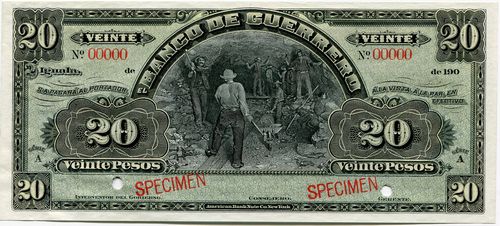
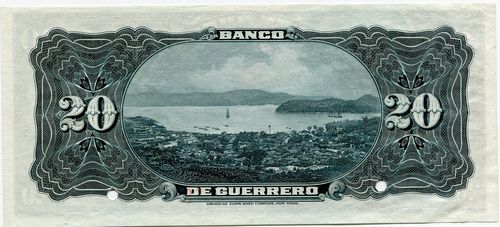 M363s $20 Banco de Guerrero specimen
M363s $20 Banco de Guerrero specimen
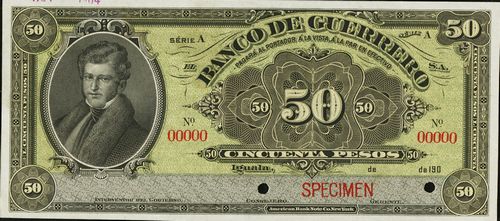
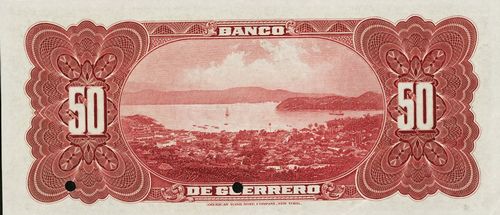 M364s $50 Banco de Guerrero specimen
M364s $50 Banco de Guerrero specimen
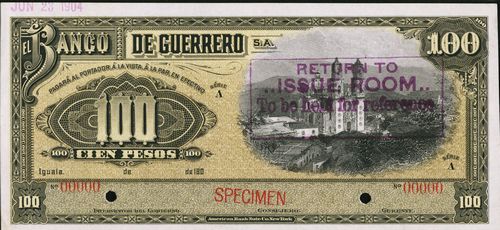
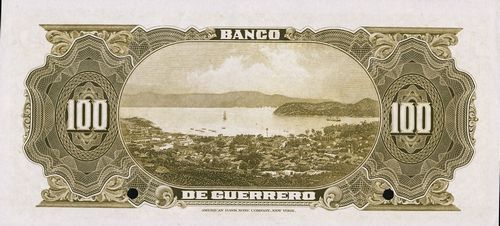 M365s $100 Banco de Guerrero specimen
M365s $100 Banco de Guerrero specimen
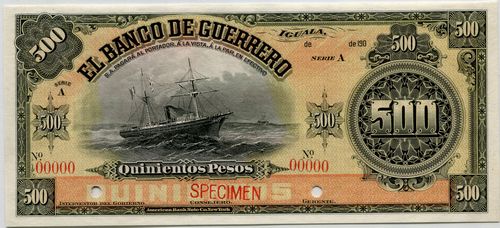
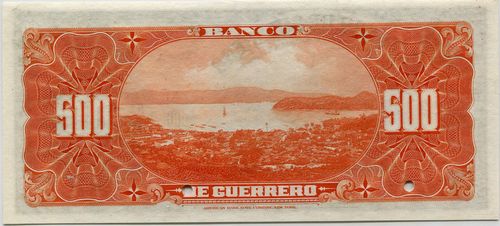 M366s $500 Banco de Guerrero specimen
M366s $500 Banco de Guerrero specimen
| Date | Value | Number | Series | from | to |
| June 1904 | $5 | 40,000 | A | 00001 | 40000 |
| $10 | 20,000 | A | 00001 | 20000 | |
| $20 | 15,000 | A | 00001 | 15000 | |
| $50 | 10,000 | A | 00001 | 10000 | |
| $100 | 2,000 | A | 0001 | 2000 | |
| $500 | 200 | A | 1 | 200 |
On 6 February 1914 the bank ordered another issue of notes, in five denominations, Series B, asking for delivery to be rushed as fast as possible, since it was in great need for the notes. The ABNC’s Resident Agent, Charles Blackmore, had been after this order for some time and also tried to get the bank interested in $1 and $2 notes, but without successABNC, folder 220, Banco de Guerrero (1907-1932).
The ABNC altered the dateline on the plates from "Iguala__de_____de 190_" to "Iguala__de_____de 19__" .
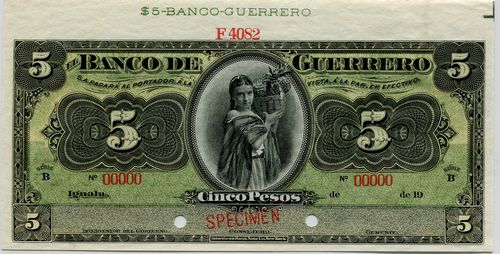
 M361s $5 Banco de Guerrero specimen
M361s $5 Banco de Guerrero specimen
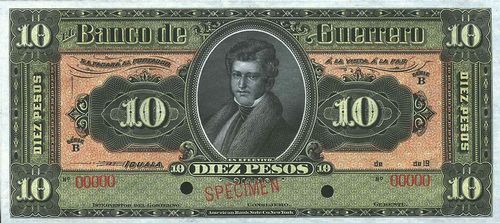
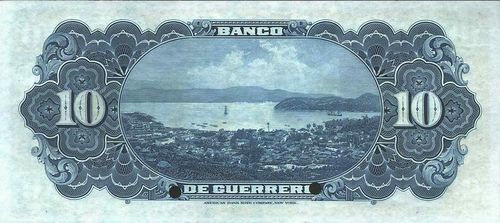 M362s $10 Banco de Guerrero specimen
M362s $10 Banco de Guerrero specimen
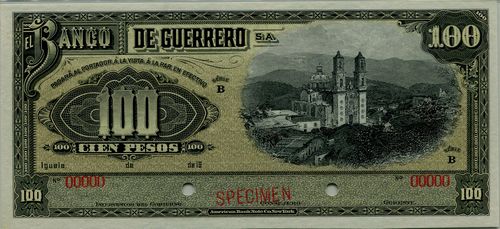
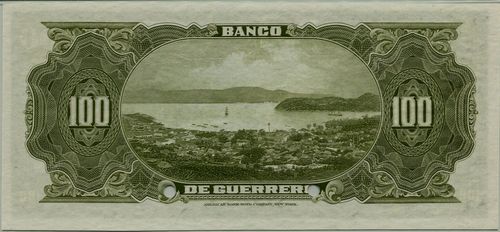 M365s $100 Banco de Guerrero specimen
M365s $100 Banco de Guerrero specimen
| Date | Value | Number | Series | from | to |
| February 1914 | $5 | 50,000 | B | 40001 | 90000 |
| $10 | 25,000 | B | 20001 | 45000 | |
| $20 | 15,000 | B | 15001 | 30000 | |
| $50 | 10,000 | B | 10001 | 20000 | |
| $100 | 7,000 | B | 2001 | 9000 |
On 2 April the ABNC consigned, via the S. S. “Esperanza”, to the Banco Internacional é Hipotecario de México in Mexico City (which owned the Banco de Guerrero) a box containing 15,000 $20 (B 15001-30000) and 10,000 $50 notes (B 10001-20000). On 9 April it shipped, via the S. S. “Mexico”, 30,000 $5 (B 40001-70000) and 16,000 $10 (B 20001-36000) and on 16 April, via the steamer “Monterey” 20,000 $5 (B 70001-80000, 9,000 $10 (B 36001-45000) and 7,000 $100 (B 2001-9000), completing the orderibid..
On 6 October 1931 the ABNC cancelled the plates that it held in its plate vaultThese were:
1 – 6/ 5 Pesos face plate
1 – 6/ 5 Pesos back plate
2 – 1/ 5 pesos tints Nos. 1 & 2
1 – 4/ 10 Pesos face plate
1 – 4/ 10 Pesos back plate
2 – 1/10 pesos tints Nos. 1 & 2
1 – 4/ 20 Pesos face plate
1 – 4/ 20 Pesos back plate
2 – 1/20 pesos tints Nos. 1 & 2
1 – 2/ 50 Pesos face plate
1 – 2/ 50 Pesos back plate
2 – 1/50 pesos tints Nos. 1 & 2
1 – 4/ 100 Pesos face plate
1 – 4/ 100 Pesos back plate
2 – 1/100 pesos tints Nos. 1 & 2
1 – 1/ 500 Pesos face plate
1 – 1/ 500 Pesos back plate
2 – 1/500 pesos tints Nos. 1 & 2
all made on order F 410.
Signatories
Gerente
Consejero
|
Cándido Nava was an Iguala businessman. Nava was on the town council of Iguala in 1904Periódico Oficial, 8 January 1904 and 1910, and served as a judge (juez de la primera instancia) in 1908. |
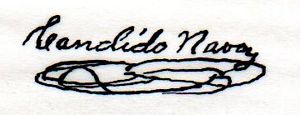 |
| Emilio Velasco |  |
|
Honey married Emma Jane Phillips, another Cornish immigrant and had four sons and five daughters. His main residence was in Mexico City, where he founded the Jockey Club. He also founded the Reforma Athletic Club in Pachuca. During an illustrious career Honey was on the board of three state banks (El Banco de Hidalgo, founded in 1902, El Banco de Querétaro, founded in 1903 and this Banco de Guerrero, founded in 1906). He was also president of an iron and steel works, two mining companies, a paint factory and was a director of two railway companies, the Ferrocarril Nacional Mexicano and the Ferrocarril de Pachuca-Tampico. Honey was known for the treatment of his workers, including always paying 25 centavos a day when the minimum wage was 18 centavos, and his humanitarian efforts to help the indigenous population. Unfortunately, some of Honey’s investments ultimately failed, the revolution increased his misfortunes and he died on 12 June 1913 practically penniless. Ricardo Honey signed notes issued in 1906. |
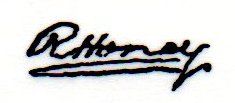 |
|
Porfirio Díaz’s hijo took advantage of his position as son of the dictator and acted, very much in his father’s mould, as a power broker with entrepreneurs who wanted contracts and grants from the government. At the same time he developed partnerships, as his father had, with many wealthy and privileged men who were active in industry and other areas of the economy. Porfirio Díaz hijo was involved in the Banco Internacional e Hipotecario de México, the Banco de Hidalgo, the Ferrocarril de Veracruz al Istmo, Compañía Manufacturera de Cigarros el Buen Tono, Compañía Irrigadora y Eléctrica en el Estado de Hidalgo, and the Fábricas de Papel San Rafael. |
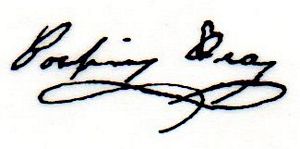 |
| Antonio Lavín was an Iguala businessman. | 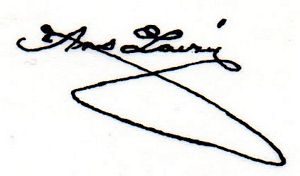 |
|
Thomas Phillip Honey was born on 4 March 1878, in Ixmiquilpan, Hidalgo, the son of Ricardo Honey (supra). Honey's main interests were in Hidalgo, where he was on the board of the Banco de Hidalgo and also, during the revolution, signed notes issued by the Compañía de Minas la Blanca y Anexas and the Compañía Minera y Beneficiadora Maravillas y San Francisco. He died on 7 March, 1957, in Mexico City, at the age of 79. Honey was the consejero who signed the notes issued in 1914. |
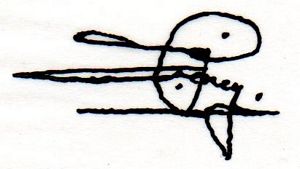 |
Interventor
Other personnel
| Ricardo Buen Abad was manager (gerente) from |


